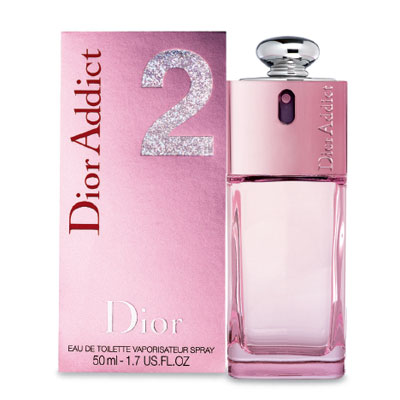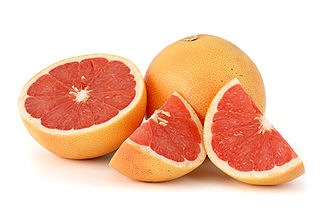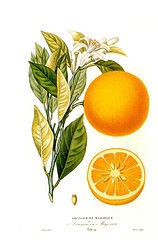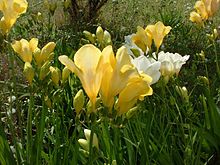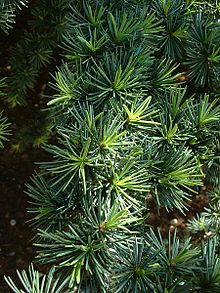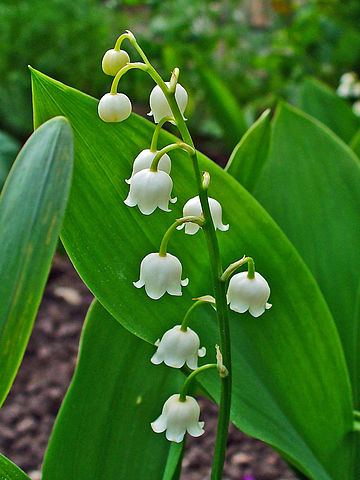Dior Addict 2
Women's Fragrance
Dior Addict 2: A Christian Dior fragrance launched in 2005. An Extraodinary women's fragrance. A great perfume for less.
Aroma Notes: Grapefruit, Orange, White Musk, Freesia, Cedar-wood, Lily of the valley and Watermelon.
Grapefruit
The essential oil is extracted from the rind of the citrus and used in the production of cologne, more often commercially used grapefruit aromatics are artificially made, and contain 90% limonene.
Orange
Orange oil is an essential oil produced by cells within the rind of an orange fruit. In contrast to most essential oils, it is extracted as a by-product of orange juice production by centrifugation, producing a cold-pressed oil. It is composed of mostly (greater than 90%) d-limonene, and is often used in place of pure d-limonene. D-limonene can be extracted from the oil by distillation. Limonene gives citrus fruit their familiar aroma, and is therefore used in Dior Addict perfume for its fragrance.
White Musk
White Musk s in the perfume industry, are a class of synthetic aroma-chemicals to emulate the scent of deer musk or other natural musk. Synthetic musk s have a clean, smooth and sweet scent lacking the fecal/"animalistic" notes of natural musk s and are sometimes attributed as having notes of blackberry and ambergris. These compounds are essential in modern perfumery and form the base note foundations of most perfume formulas. Most, if not all musk fragrance used in perfumery today is synthetic.
Freesia
Freesia is one of 16 species of flowering plants in the family Iridaceae, native to the eastern side of southern Africa, from Kenya down to South Africa, most species being found in Cape Province. The plants commonly known as "freesias", with fragrant funnel-shaped flowers, are cultivated hybrids of a number of Freesia species. They are widely cultivated and readily increased from seed. Due to their specific and pleasing scent, they are often used in hand creams, shampoos, and Dior Addict perfumes.
Cedar-Wood
Cedar-wood oil, is an essential oil derived from the foliage, and sometimes the wood and roots. It has many uses in medicine, art, industry and perfumery and while the characteristics of oils derived from various species may themselves vary, all have some degree of bactericidal and pesticidal effects. Cedar-wood oils each have characteristic woody odors which may change somewhat in the course of drying out. The crude oils are often yellowish or even darker in color and some, such as Texas cedar-wood oil are quite viscous and deposit crystals on standing.
They find use (sometimes after rectification) in a range of fragrance applications such as soap women's cologne/perfumes, household sprays, floor polishes and insecticides.
Lily Of The Valley
Lily of the Valley, is a sweetly scented (and highly poisonous) woodland flowering plant that is native throughout the cool temperate Northern Hemisphere in Asia, Europe and in the southern Appalachian Mountains in the United States. The odor of lily of the valley, specifically the ligand bourgeonal, attracts mammal sperm in a dramatic manner. The 2003 discovery of this phenomenon prompted a new wave of research into odor reception, but no evidence was found that the female sex organ has similar odors of any kind. The flower is also known as Our Lady's tears or Mary's tears from Christian legends that it sprang from the weeping of the Virgin Mary during the crucifixion of Jesus.
Other etiologies its coming into being from Eve's tears after she was driven with Adam from the Garden of Eden or from the blood shed by Saint Leonard of Noblac during his battles with a dragon.
Get perfume for less
Watermelon and Dior Addict 2
Watermelon seed oil is extracted by pressing from the seeds of the watermelon. It is particularly common in West Africa, where it is also called ootanga oil or kalahari oil. Watermelons probably originated almost 5,000 years ago in the Kalahari Desert of Africa where botanists have found its wild ancestors still growing. Watermelons migrated north through Egypt, and during the Roman era they were cultivated and prized.
Traditionally, the seeds are extracted from the seed casing, and dried in the sun. Once dried, the seeds are pressed to extract the oil.The high content of omega acids & Linoleic acid within the oil assist in the removal of excess sebum within the skin ensuring the skin is cleansed. The oil from the watermelon seeds can be used to dissolve the oil build up in the pores. So it is best for oily skin. Watermelon seed oil contains high amounts of unsaturated fatty acids with linoleic and oleic acids as the major acids. It has an indefinite shelf life when it is stored in a cool and dry place. It comes with perfect viscosity.
The oil is light and it is colorless or pale yellow in color. It is easily and quickly absorbed in the skin. All these properties make it an all-purpose oil. Watermelon seed oil characteristics were evaluated to determine whether this oil could be exploited as an edible oil. Considering that the watermelon seed oil was highly unsaturated, the relatively high induction time might indicate the presence of natural antioxidants. Watermelon seed oil is used in baby formulations, creams, lotions, soaps, colognes/Dior Addict perfumes and eye creams.
Home Page Dior Addict>Back to Christian Dior the biography Perfume News
